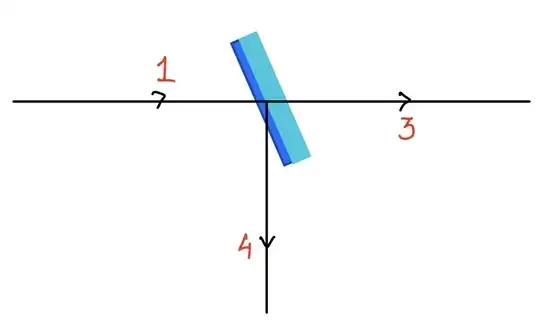The word photon is used under several different contexts by physicists. And that leads to a huge confusion when one begins to take it seriously in those contexts. Here is Lamb’s famous rant, Anti-photon.
But there is an actual unambiguous and consistently described entity that is named photon, the elementary excitation of the electromagnetic field. For a better understanding of the same, this is an excellent place to start.
You hit up on the key mystery when you say
In my picture, I assume the photon to have a size, which may be incorrect in the first place if it is actually a point with no size, thus making the problem disappear.
That in essence, is the so called wave-particle duality. Because the delocalised entity called photon, is more or less detected as a localised entity always of fixed energy!
So what’s the right interpretation? Like you guessed,
If, on the other hand, a photon is an indivisible object, then will the issue only be a matter of probability, either the photon passing or not passing?
It’s a matter of probability. Or more precisely, the probability amplitude. After each obstacle, there is an associated amplitude to be reflected, transmitted, or absorbed.
For a concrete example, consider a photon impinging on a perfect beam splitter. After passing through, the photon is in an equal superposition of having been reflected and transmitted.
 But if we place a detector in each of the outgoing branches, we will always detect it in one of the detectors. Never simultaneously in both of them. Furthermore if you recombine the two outgoing branches, and place the detector at the place of recombination, you’ll still detect it in one place. But if you repeat the experiment several times, a fringe pattern emerges in the (integrated) detection! This imposes that we can’t imagine the photon as having travelled through one of the paths over the other!
But if we place a detector in each of the outgoing branches, we will always detect it in one of the detectors. Never simultaneously in both of them. Furthermore if you recombine the two outgoing branches, and place the detector at the place of recombination, you’ll still detect it in one place. But if you repeat the experiment several times, a fringe pattern emerges in the (integrated) detection! This imposes that we can’t imagine the photon as having travelled through one of the paths over the other!
I could determine what happens with waves, e.g. sound pressure waves in water or air, but photons are different.
When light of usual intensity is used, the description of it as an electromagnetic wave can be applied. But we can always prepare the system to contain very few photons, and this is one of the key differences between the waves you have mentioned and light. There is also another great mystery which is entanglement but that’s a story for another day.
